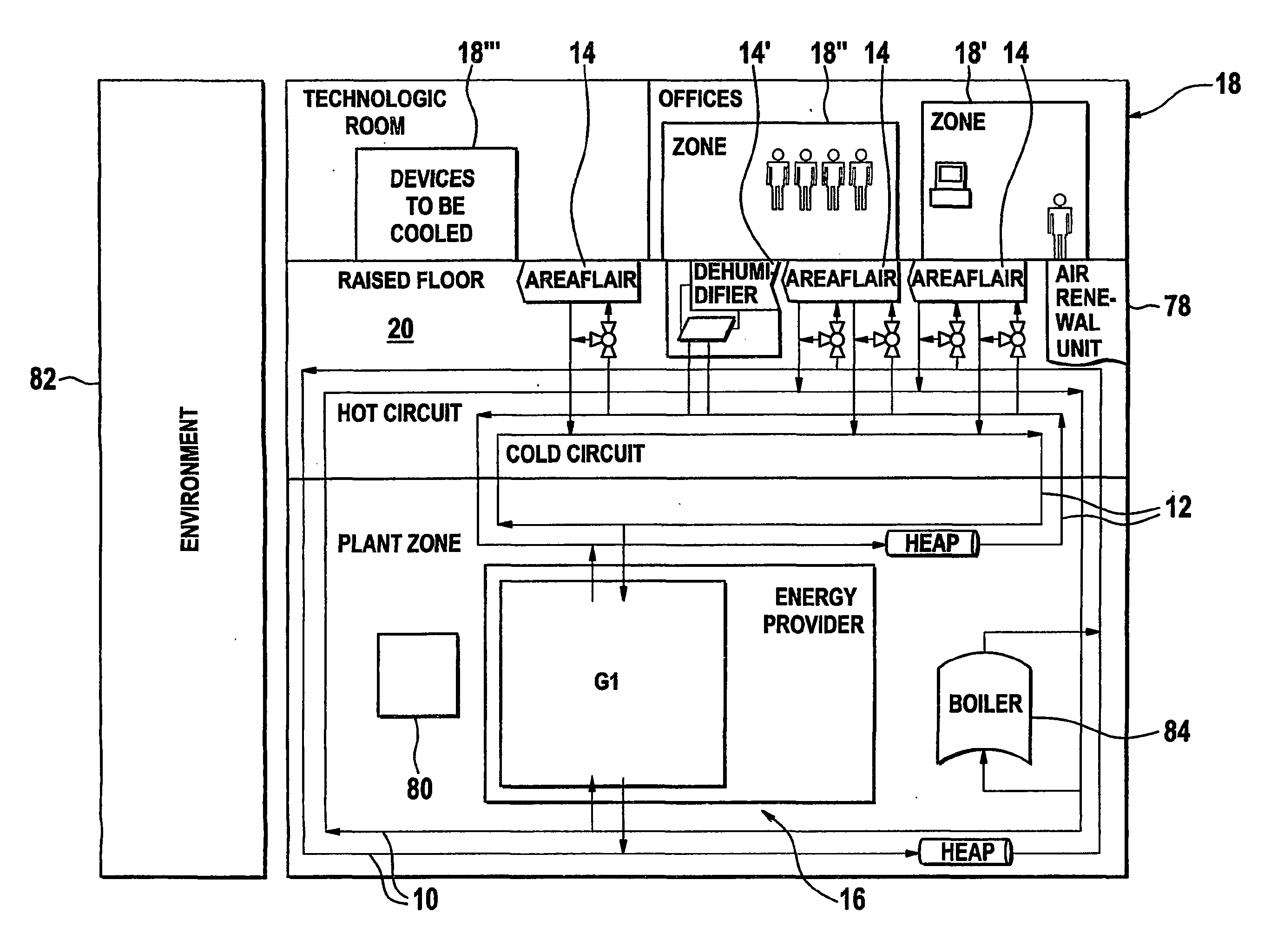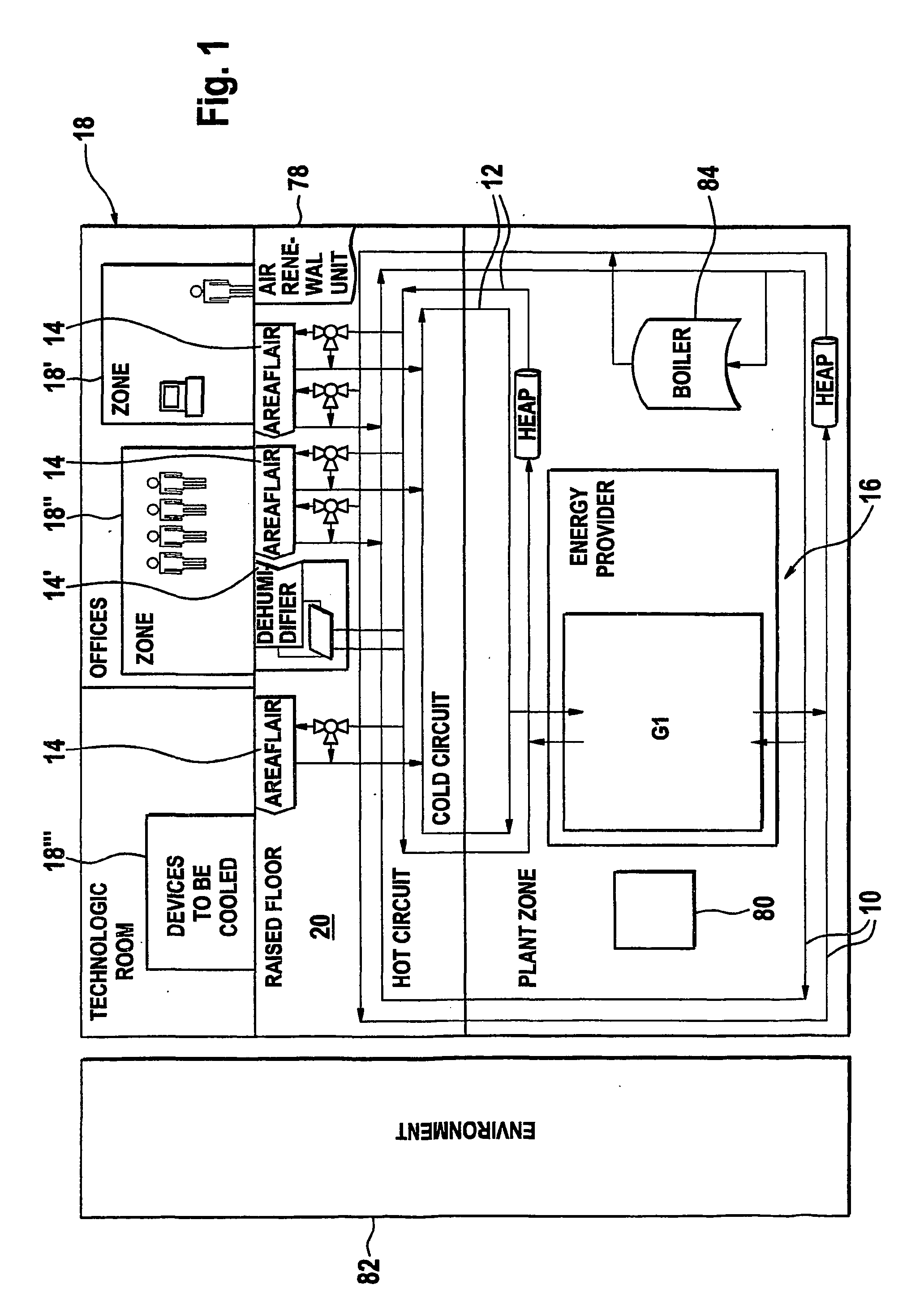Air-conditioning system
a technology of air-conditioning system and air-conditioning system, which is applied in the field of air-conditioning system, can solve the problems of significant energy wastage, achieve the effects of simplifying and speeding up installation, reducing installation costs, and reducing energy consumption and space occupation
- Summary
- Abstract
- Description
- Claims
- Application Information
AI Technical Summary
Benefits of technology
Problems solved by technology
Method used
Image
Examples
Embodiment Construction
[0033] FIG. 1 shows schematic diagram of an air-conditioning system in accordance with the present invention. This system comprises a hot water distribution circuit 10 and a cold (or chilled) water distribution circuit 12, a plurality of terminal air conditioning units 14, which are also called zone terminal units, and a heat / cooling generator 16 also called "energy provider" 16.
[0034] The hot and cold water distribution circuits 10, 12 are conceived as closed peripheral energy distribution loops in a building 18. Various zones 18', 18", 18'" of the building 18 require cooling and / or heating energy according to their specific needs. The whole air-conditioning system is conceived with a similar logic to that of electrical energy distribution: cold and hot water distribution networks are installed in the building 18 and then, according to individual needs, local terminal units 14 draw on the primary distribution to guarantee temperature and humidity control in the different zones 18',...
PUM
 Login to View More
Login to View More Abstract
Description
Claims
Application Information
 Login to View More
Login to View More - R&D
- Intellectual Property
- Life Sciences
- Materials
- Tech Scout
- Unparalleled Data Quality
- Higher Quality Content
- 60% Fewer Hallucinations
Browse by: Latest US Patents, China's latest patents, Technical Efficacy Thesaurus, Application Domain, Technology Topic, Popular Technical Reports.
© 2025 PatSnap. All rights reserved.Legal|Privacy policy|Modern Slavery Act Transparency Statement|Sitemap|About US| Contact US: help@patsnap.com



